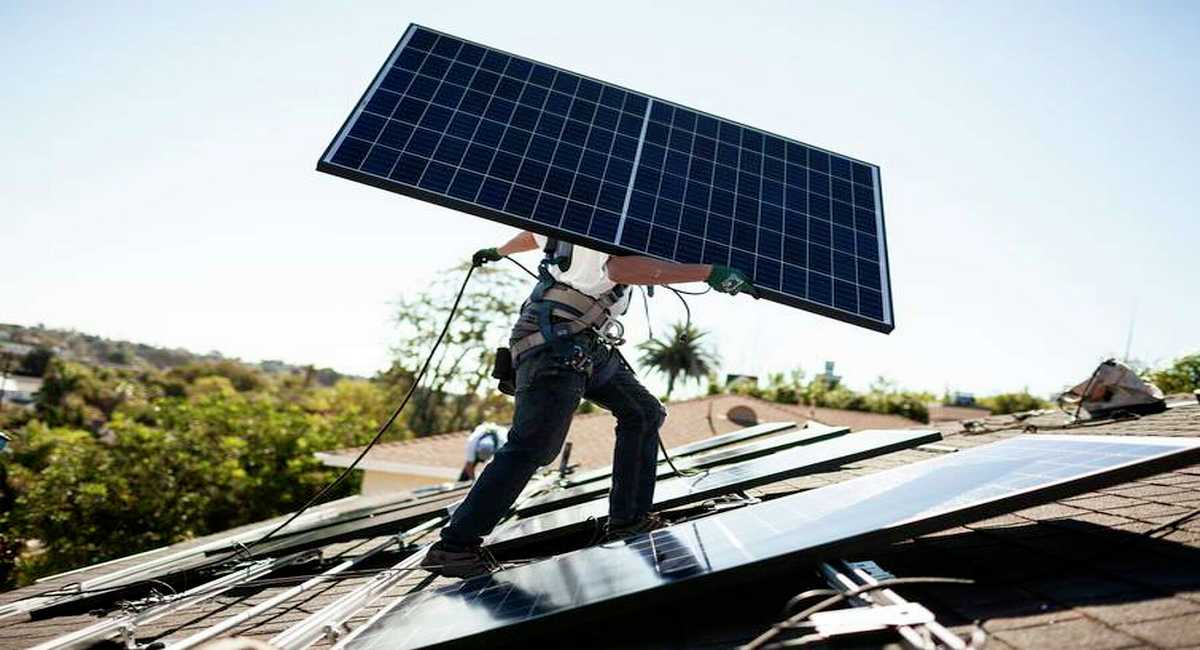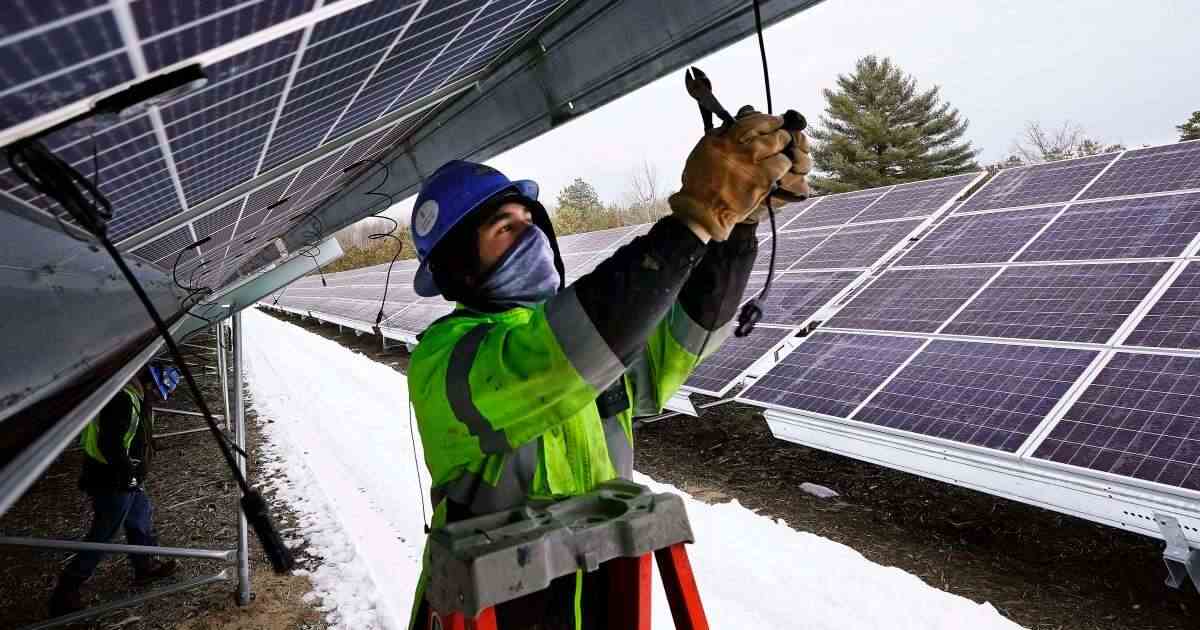Why Is There So Much Pushback When It Comes To Solar Energy In The US?

Overview:
Solar energy is having a decent year. In the United States, residential solar panel installations have entirely recovered from the COVID collapse, with experts projecting more than 19 gigatonnes of total capacity installed, up from 13 gigatonnes at the end of 2019. According to industry estimates, that number might treble in the next ten years. And it doesn't even take into account the potential effect of new laws and incentives enacted by the green-friendly Biden administration.
The Solar Investment Tax Credit, which defrays 26 percent of all solar-related expenditures for all residential and commercial clients, is largely responsible for solar's pandemic-proof performance (just down from 30 percent during 2006–2019). After 2023, the tax credit for business installations will be reduced to a permanent 10% and will be phased out altogether for house purchasers. As a result, solar sales are likely to heat up even more in the coming months, as purchasers rush to cash in while they can.
Tax breaks aren't the main cause of the solar boom. Over the previous decade, panel conversion efficiency increased by up to 0.5 percent per year, even as production costs (and thus prices) fell significantly due to successive rounds of manufacturing innovation-led primarily by industry-dominant Chinese panel makers. For the end-user, this means reduced upfront expenses per kilowatt-hour of energy produced. This is fantastic news, not just for business, but for anybody who recognizes the need to shift from fossil fuels to renewable energy for the sake of our planet's future. However, there is a significant caveat that few are discussing.
Solar Energy Scenario in the US:
Solar power is more economical, accessible, and widespread in the United States than ever before. From only 0.34 GW in 2008, U.S. solar power capacity has increased to an estimated 97.2 gigawatts (GW) now. This is enough to power the equivalent of 18 million ordinary American homes. Today, about 3 percent of U.S. electricity comes from solar energy in the form of solar photovoltaics (PV) and concentrating sun-thermal power (CSP) with the assistance of solar structure design software and solar sales. Since 2014, the average cost of solar PV panels has dropped by roughly 70%.Markets for solar energy are expanding fast throughout the nation because solar power is now economically competitive with traditional energy sources in most jurisdictions.
Solar’s availability and potential across the United States is staggering. PV panels on only 22,000 square miles of the nation’s total land area—approximately the size of Lake Michigan—could generate enough energy to power the whole United States. Solar panels may also be erected on roofs with almost no land use implications, and it is anticipated that more than one in seven U.S. residences will have a rooftop solar PV system by 2030.
CSP is another way of gathering energy from the sun, with around 1.8 GW of capacity in the United States. Between 2010 and 2020, the cost of power generated by CSP plants was reduced by more than half.If CSP cost reduction objectives are satisfied, estimates suggest it may offer up to 158 GW of electricity to the U.S. by 2050.
Moreover, the solar business is a proven incubator for employment development across the country. Over the last decade, solar employment in the United States has increased by 167 percent, which is five times faster than the overall job growth rate in the country.There are more than 250,000 solar employees in the United States in industries encompassing manufacture, installation, project development, commerce, distribution, and more.

Solar energy hasn’t realized its full potential as a sustainable energy source for the United States, and substantial work has to be done to encourage the implementation of solar technology. Solar hardware prices have declined considerably, but market hurdles and grid integration issues continue to limit further implementation. Non-hardware solar "soft costs"—such as permitting, finance, and customer acquisition—are becoming an ever bigger part of the overall cost of solar and currently contribute up to 65 percent of the cost of a residential PV system. Technological improvements and new market solutions are still required to boost efficiency, bring down prices, and allow utilities to depend on solar for baseload electricity.
Solar Pushback in the US:
California is now the leading state for solar power, with enough solar to power over 8,430,324 households, and solar accounts for over 25% of the state's total energy. As a result, California is a fantastic early illustration of what our country's energy future may look like. Indeed, California is contemplating restructuring its electrical system to allow for even greater solar and other renewable energy development.
Local solar is important to us. For example, all are emphasizing how much California stands to gain by allowing solar to continue to thrive.They just completed a study that "describes how expanding local rooftop and community solar and batteries may save the state billions of dollars while lowering greenhouse gas emissions and generating thousands of good-paying jobs." To be precise, $4 billion every year, or more than $120 billion overall by 2050. This is in addition to allowing the system to relax during important peak periods of electrical usage, which often result in forced blackouts. This equates to $295 in yearly savings for the typical California consumer.
With soaring energy prices, wildfire damage, blackouts, and power outages, you'd think solar energy would be embraced by everybody. However, Big Energy is attempting to persuade politicians to halt the growth of rooftop solar.
So, what's the problem? The solution is straightforward: more individuals embracing solar equals less electricity purchased from energy corporations. Less electricity required means less money for them. It is obvious that today's homeowners need a different answer than they did when the major energy providers initially began. The current energy grid cannot be relied on to keep your lights on and your homes running. Climate change, catastrophic calamities, and overburdened power networks have made grid power outages inevitable. And California is one of the states most often affected by these difficulties, with over 4,000 outages in the previous decade alone. Alternative energy is the answer that everyone is thinking about – and the power corporations are well aware of it.

This is not a California-only problem; According to Environment Florida's Research and Policy Center, a new analysis reveals attempts to weaken solar power at the federal level as well as in six states.
Rooftop solar is under danger in Florida as utility providers change their net metering laws. Utility providers are doing this despite a regulation established by the Florida Public Service Commission (PSC) that establishes a statewide uniform policy on net metering. Because city-owned utility providers, such as JEA in Jacksonville, are not required to completely comply with these laws, the company has elected to limit the net metering payback to its solar consumers.
Solar policy proponents, such as Solar United Neighbors (SUN), are now pushing back against assertions that solar is hurting electricity consumers who do not have solar. They claim that net metering has helped solar expand by 10,000% in Florida. According to Alissa Schafer of the Energy and Policy Institute, "the number of individuals who have solar on their company or on their house is so unbelievably minimal, it's ludicrous to infer that this is generating a cost shift." Furthermore, recent data from Michigan Tech University reveals that "homeowners with rooftop solar are really supporting their neighbors who don't have rooftop solar." Unfortunately, California and Florida are not the only states experiencing this. Kansas, Arizona, and a number of other states are grappling with utility industry pushback, which is stifling solar expansion in places that are especially ripe for it.
Final Thoughts:
The solar energy sector has come a long way since solar pioneers first harnessed the power of the sun. Consumers are seeking green solutions now more than ever before, and this includes their energy. If we keep working together, we can move energy ahead, employing sustainable energy like solar.
Not only is it beneficial for the environment, it also saves you money on your monthly power bill. Don’t let the energy corporations deceive you!

